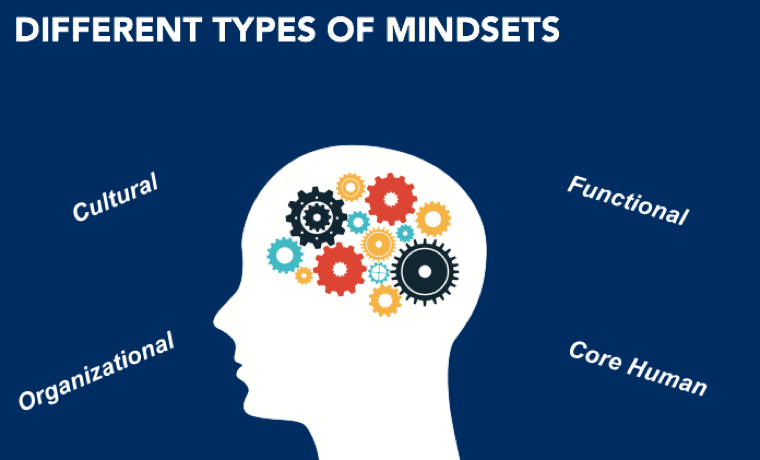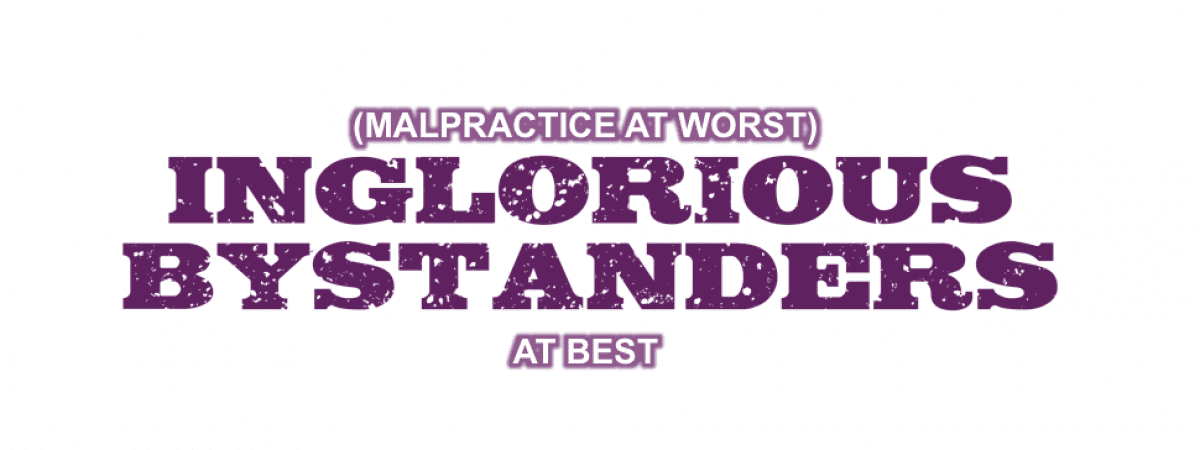Why Chief Innovation Officers (NOT JUST Chief HR/Diversity Officers) should be treating the “BIAS VIRUS” in your company…
SUMMARY: The very same (explicit and implicit) counterproductive cognitive biases that fuel decades of micro and macro aggressions toward women/minorities in the workplace are also fully embedded in the anchors of corporate cognitive bias and mental models that are undermining your innovation strategy, collaboration, knowledge sharing, engagement, complex problem-solving, any/all change initiatives (e.g., fixed vs. growth mindsets, knower vs. learner mindsets, victim vs. creator mindsets). Unconscious bias (UB) is a virus that’s killing your strategy and disadvantaging your best people at the same time.

SAME BRAINS. SAME BIASES.
For example, a long-held belief/bias that men are better leaders than women is as counterproductive today as a long-held belief/bias that a business strategy focused on hardware and software is better than shifting to that new “cloud” thing. The old success formula is great until it isn’t. Then holding onto it is just stupid. But your brain doesn’t care, and it’s in charge — not you. The same mental models and corporate social norms that lock those ancient systemwide biases (e.g., men over women, powerful men and women over all others) in place also keep your individual and institutional biases (e.g., reactivity over creativity, reliability over eventuality, evaluative over generative, patriarchy over mutual learning) commanding and controlling your future right into the past. Chances are your innovation strategy is so corrupted by these biases that you’re unknowingly designing your company into the 1970s. Until your executive team recognizes and addresses UB and the realities of associated gender/race inequality paradigms in your organization like the mission-critical, customer-facing, fully integrated, strategic business priority that it is (rather than treat it like a board/CEO pet project, “pseudo priority”), your company won’t make much progress toward the future. If your company is stuck in the past, chances are you are one of the powerful executives contributing to the spread of the bias virus and bystander culture.
MALPRACTICE AT WORST. INGLORIOUS “BYSTANDERING” AT BEST.
IF unconscious bias were a medical condition (and leaders/teams were the patients), THEN…most chief human resource officers, chief diversity officers, chief learning officers, learning and development directors, gender diversity and inclusion directors, the Ph.Ds. who fill those departments, and all of the CEOs and boards that sponsor/approve most of today’s UB prescriptions/UB treatment plans would be jailed/sued for malpractice…or at least fired for their silence and Paterno-like inglorious bystandering.
Unconscious bias IS the No. 1 business challenge from which all other business challenges arise. UB is silently killing your winning business strategy from the inside out. UB is stifling your business results and eating both your culture and your strategy for breakfast. UB doesn’t care. UB is sucking the energy, passion, engagement, trust, and commitment out of even your most talented populations while turning away the global talent and customers alike that you are trying desperately to attract. UB doesn’t care. UB doesn’t recognize what your company values, its purpose or business goals are. UB doesn’t care what kind of leader you think you are. UB doesn’t care what kind of leader (you think) your children think you are. UB is ruining your leadership impact. UB is making you (and your team of leaders) look outdated and oblivious. UB is killing you and the people you’re supposed to be leading. How tragic that you (should) know this already. How tragic and yet still so very little will be done about it during your tenure.
To change this trajectory, the funding and focus of disparate UB training programs, corporate universities, leadership development and innovation/transformation leadership programs all need to be elevated, consolidated and then integrated into new corporate lifestyle habits that have the power to overcome all the maladaptive biases we carry with us.
Even though our executives and boards are supposed to be made up of our highest value decision-makers, complex problem solvers and action takers (that’s the primary output of professionals in the 21st century), they aren’t adapting quickly enough today. In the context of readying the corporation for the future, these most valuable executives are supposed to be leading current and future teams of leaders through a transformative shift in their thinking patterns (investing in elevating the mental complexity and emotional intelligence of the organization) to take action against the counterproductive thinking patterns of the industrial age and the outdated behaviors that undermine the company’s current and future business strategy, ROI and competitive market positioning. They may think they are doing just that, but they are likely themselves even more trapped by the visible and invisible biases than the rest of us. Even the well-intended (enlightened) hierarchies holding the most powerful senior roles are unconsciously more imprisoned (zombified) and entrenched in perpetuating these unconscious biases largely because a) once they reach a position of power, they are less empathetic/less aware of the disadvantaged plight of those with less power; b) they are personally benefiting from the biases and power structures remaining in place. The more intelligent, accomplished and successful you are, the less likely you are to believe that your thinking + behavior could possibly be suffering from these unconscious blind spots. That makes you a more dangerous decision-maker (a “walker”).
Even when corporate boards and CEOs finally declare that mitigating gender/race/age bias is a priority, most of their employees don’t believe it — and they’re right not to. That’s because when this “pet project” of the board gets handed off to someone in HR or L&D to design and implement, it is still treated like an optional, bolted-on sidecar to the business strategy. It is underfunded. It is underestimated. The leadership mandate to make it reasonable, practical and scalable (efficient and cheap) creates a superficial treatment and doesn’t provide much cure. It’s odd that executives aren’t more sensitive to what’s effective vs. what’s reasonable and convenient. The “bias virus” (as I like to call it) doesn’t care what else is on your calendar…you’re going down, and there’s no flu shot or pill you can take to wish it away.
Today, many of the people responsible for treating corporate cognitive biases treat them as if they were only a minor, social, HR issue — a case of the sniffles or a sore throat that’ll go away with words of encouragement, patience, sensitivity and a box of tissues. They treat cognitive bias like a minor illness instead of treating it like the most Pervasive, Advanced, Chronic, Malignant, Acute, Neurodegenerative (PACMAN) and treatable leadership condition that drives individual and team behaviors while negatively affecting business activities impacted by those behaviors such as innovation, strategy, execution, customer centricity, retention, recruiting, collaboration, agility, engagement, risk-taking, knowledge sharing and culture change.
Treating deeply ingrained mental models, mindsets and biases (the “bias virus”) with the equivalent of little more than edutainment, awareness programs and two-hour webinars is like treating the Ebola virus with a bouillon cube shortcut because the equally ineffective chicken soup remedy takes too long for busy executives. That’s negligent and blameworthy to address individual, organizational and systemic corporate biases and the need to shift mindsets with programs that minimize or skip the deep, personal adult development work necessary for senior leaders to shift. It’s the only proactive development work that has the power to influence the system in a meaningful way. These bystanders, on the other hand, recommending anything less or suggesting that somewhere in the organization they are indeed working on a “much more strategic/comprehensive effort” (REALLY? LET’S SEE IT!) are complicit with their cowardly silence and sensitivity to corporate norms rather than being more sensitive to what actually works. Instead of effectively supporting the expansion of leadership capabilities, helping them ready the company for the network age that’s already passing them by, most learning and development executives (and their programs) are trapped in the same culture shackles of learned helplessness that they are supposed to be helping liberate.
2016 HARVARD BUSINESS REVIEW: “The problem is, organizations are trying to reduce bias with the same kinds of programs they’ve been using since the 1960s. And the usual tools—diversity training, hiring tests, performance ratings, grievance systems—tend to make things worse, not better.” That’s what malpractice sounds like to me.
THE MALPRACTICE IS DOCUMENTED. LEADERSHIP ACCOUNTABILITY, METRICS AND STANDARDS ARE PRETTY LOW (EVEN WHEN CLAIMING TO BE HIGH).
Even the more progressive silicon valley tech companies and venture capital companies mostly treat the UB problem by ignoring it altogether or treat it like it is a political/social/HR issue with regard to sensitivity training or some corporate social responsibility program…loosely connected to business. Again, it’s a business leadership issue; it’s a strategy execution issue. Most programs are largely limited by budget, power or sponsorship, evidenced by how the programs are implemented and how little progress has been made and exposed in this “Why Is Silicon Valley So Awful to Women?” article.
There are endless amounts of research and data in every industry, including life and death ones, like in the article Bias in the ER — about how doctors suffer from the same cognitive distortions as the rest of us. Endless amounts of research on adult development approaches to bias by Kahneman, Tversky, Kegan, etc., all say similar things about our explicit and implicit bias/limitation of the brain that gets in the way of decision-making — some that were published back in the 1770s let alone the more recent stuff in the 1970s. In 2017, senior executive professionals in the field of learning and development are aware of the research, data, lawsuits and impact that UB has on decision-making and outcomes. In 2015, 20 percent of most large companies had unconscious bias (UB) and gender, diversity and inclusion programs (GD&I). By 2020, it is predicted that 50 percent of companies will have UB and GD&I programs. But what kind of programs will they be? The “bouillon cube” kind?
WHAT WORKS? VERTICAL LEARNING PROGRAMS SHIFT MINDSETS, CHANGE BEHAVIORS, AFFECT BUSINESS-RELATED ACTIVITIES AND CHANGE OUTCOMES.
Experts know that mitigating the negative effects of bias requires a special kind of transformation program — vertical (adaptive) learning programs — that unlock “next-level” mental complexity and emotional intelligence for leaders who want to pursue that. It’s an operating system upgrade. But most time-constrained and mind-constrained corporations deliver bite-sized, horizontal learning. Horizontal learning is adding skills at the current level of the current operating system. Horizontal learning is fine for many developmental needs but useless with regard to more complex adult development needs. To address bias with horizontal learning programs (or not knowing the difference) is useless, negligent and blameworthy bystandering.
Complex adaptive challenges (like culture change, mindset shifts and mitigating unconscious bias) require complex adaptive leadership training to overcome bias/beliefs (long rewarded and held consciously and unconsciously), creating blinds spots at the current level that block them from seeing the possibility of additional/viable perspectives, leaving leaders trapped by their prior success and by what they know, incapable of expanding their own perspective let alone facilitating a high-performance environment that can. Vertical learning programs include: a) stretch experiences; b) more direct applicable focus on the business challenges/goals, giving everyone a stronger reason to practice; c) new paradigms, frameworks for thinking, responding, practicing; and d) are designed to create long-term, formal and informal, peer-based (social learning) communities of practice that deliver depth over speed while being speedy. That’s how adult development is accelerated. That’s how adults increase their mental complexity and emotional intelligence. Complex adaptive leadership muscles are muscles that all leaders have. But for most, they have not yet developed them sufficiently to lead in the 21st century/Fourth Industrial Revolution.
INCONGRUENCE — NOT WALKING THE TALK
I cringe when leaders say, “Our senior executives are all very aware of this priority, but we’re still figuring out how to solve it. They are all just so busy that it is not reasonable to expect them to spend more than a couple hours on this — though that’s all they need; they are very smart.” ARE YOU SERIOUS? That’s a real quote (from a distinguished Ph.D.) heard in similar forms from more than one diversity leader and more than one innovation strategy leader at double-digit, multibillion-dollar organizations. That’s what fear and confirmation biases sound like — unknowingly contributing to protecting the preference for the status quo = homeostasis at work.
Here are some additional examples of where the (“it’s a priority”) incongruence and appropriately labeled “bystander” behavior shows up:
- Most senior executives don’t go through the training themselves. They don’t go through the stretch experiences and conversations that they want others to go through — and it shows.
- Most executive sponsors demonstrate how they perpetuate organizational contradictions and how little they have prioritized the treatment of bias with their “cringeworthy” sponsorship speeches and oblivious comments like: “I don’t even think about gender bias; I don’t do that on my team” — only to embarrass themselves and undermine the integrity of the program and leadership overall.
- Most programs only touch a tiny population of “high-potential” employees — with a tiny portion of content. In a company of tens of thousands of employees, they might only expose a couple hundred employees (at best) to the program over a year’s time and then send them back into the inertia of the organization where it’s quickly understood what is valued and what isn’t.
- Most company leaders are afraid to publish your numbers for gender and diversity pay parity, promotion rate, etc., because they haven’t changed sufficiently. They don’t publish the metrics, don’t have target goals, and blame the attorneys for that bad business practice (plenty of companies, with more attorneys than you, do publish), and the transparency tsunami is going to expose your numbers soon enough. Some are updated regularly in public Google documents (e.g., women in software engineering).
- Most company leaders are visibly suffering from the leadership complexity gap, unable to respond better to change, lack of agility, curiosity, collaboration, engagement, etc., any better than they could decades ago.
- Most company leaders still proudly protect their own status by showing a tendency to focus on short-term efficiency over effectiveness; cost vs. transformation outcomes; speed over depth; etc., contributing to a lack of progress closing the leadership complexity gap.
Why is corporate bystandering still so prevalent? We all know it’s happening, right?
Corporations have not invested in training their mindset shifting muscles. They don’t have an expert orientation to their role as culture or change leaders. L&D has taught them to prefer and settle for edutainment bu$$sh#t awareness programs.
Power, it turns out, diminishes empathy and increases the “knower/fixed” mindset. And we all know that dominant power structures are biased and don’t give up their dominance willingly, even when it’s in their best interest and the best interest of the whole. Unless, of course, you are aware of your biases, then you can work on them.
WHO’S BYSTANDERING THE MOST IN THE FACE OF BIAS AT YOUR COMPANY? IT’S DIFFERENT EVERYWHERE. YOU DECIDE.
- CEO (chief executive officer)? Yes, ultimate accountability, but most hide behind their executive team and blame them or they blame the culture (everyone else but themselves)
- CHRO (chief human resource officer)? Yes, they should have command of all things people related but are focused mostly on administrative, policy, procedure, budget and legal matters
- CTO (chief talent officer)? Should be connecting future capabilities/resources and business needs (It’s rare to find one who has enough business experience and people experience to be consciously competent for this role.)
- CLO (chief learning officer)? L&D? Should be the experts at prioritizing vertical and horizontal development needs but are trapped by the same learned helplessness as the general population — deferring to business short-term demands and power structures, living in fear from budget to budget, trying to justify their own job through self-preservation vs. effectiveness
- GD&I (gender, diversity and inclusion) leader? Should be the powerful expert integrated into the business but typically reports to CHRO
- BU (business unit) leader?
WHO IS WORKING ON IT LIKE A BUSINESS PRIORITY?
Chuck Robbins, CEO at CISCO, is very clear on the business benefits of addressing biases (conscious and unconscious) in a deliberate and strategic way. It is tangible in how the CISCO innovation team aligns with learning and development and gender, diversity and inclusion priorities as you can read what Robbins wrote in his blog post:
“With the increasing pace and complexity of today’s market, it’s critical that our leadership team understands our customers, delivers results, brings diverse perspectives and experiences, and builds world-class, highly motivated teams. This will differentiate us as a much faster, innovative organization that delivers the best results for our customers.”

























